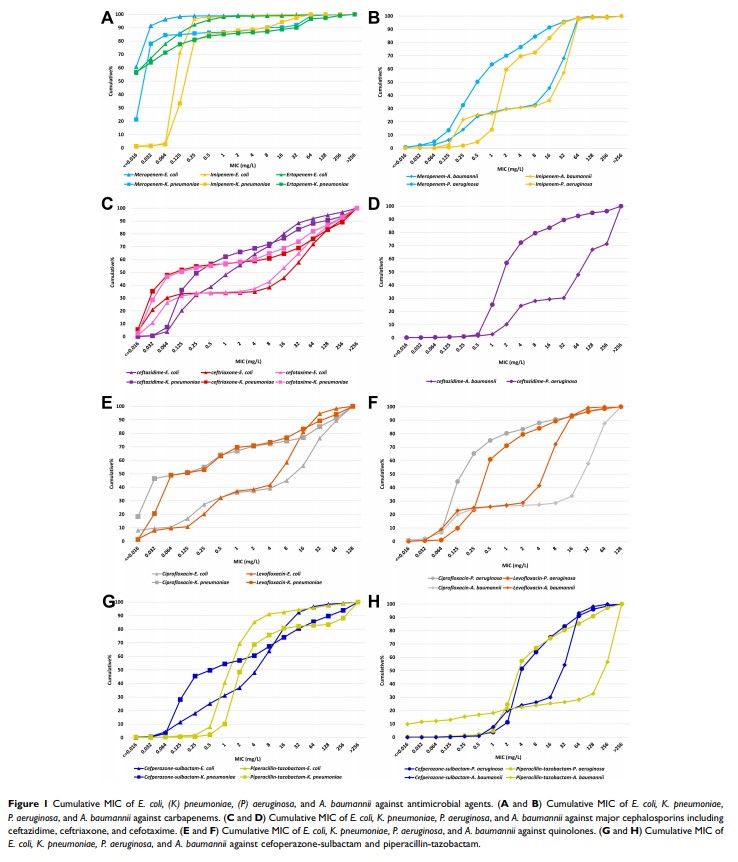100417
论文已发表
注册即可获取德孚的最新动态
IF 收录期刊
- 3.3 Breast Cancer (Dove Med Press)
- 3.4 Clin Epidemiol
- 2.5 Cancer Manag Res
- 2.9 Infect Drug Resist
- 3.5 Clin Interv Aging
- 4.7 Drug Des Dev Ther
- 2.7 Int J Chronic Obstr
- 6.6 Int J Nanomed
- 2.5 Int J Women's Health
- 2.5 Neuropsych Dis Treat
- 2.7 OncoTargets Ther
- 2.0 Patient Prefer Adher
- 2.3 Ther Clin Risk Manag
- 2.5 J Pain Res
- 2.8 Diabet Metab Synd Ob
- 2.8 Psychol Res Behav Ma
- 3.0 Nat Sci Sleep
- 1.8 Pharmgenomics Pers Med
- 2.7 Risk Manag Healthc Policy
- 4.2 J Inflamm Res
- 2.1 Int J Gen Med
- 4.2 J Hepatocell Carcinoma
- 3.7 J Asthma Allergy
- 1.9 Clin Cosmet Investig Dermatol
- 2.7 J Multidiscip Healthc

2010 年至 2018 年中国医院内革兰阴性杆菌长期持续抗菌素耐药性监测(CMSS)
Authors Wang Q, Wang Z, Zhang F, Zhao C, Yang B, Sun Z, Mei Y, Zhao F, Liao K, Guo D, Xu X, Sun H, Hu Z, Chu Y, Li Y, Ji P, Wang H
Received 15 April 2020
Accepted for publication 12 July 2020
Published 28 July 2020 Volume 2020:13 Pages 2617—2629
DOI https://doi.org/10.2147/IDR.S253104
Checked for plagiarism Yes
Review by Single anonymous peer review
Peer reviewer comments 2
Editor who approved publication: Dr Eric Nulens
Purpose: The Chinese Meropenem Surveillance Study (CMSS) was conducted every 2 years from 2010 to 2018 to monitor the antimicrobial activity of commonly used antimicrobial agents against nosocomial gram-negative bacilli in China.
Methods: From 2010 to 2018, 6,537 gram-negative bacilli were collected from 14 teaching hospitals. The minimum inhibitory concentrations (MICs) of meropenem and other antimicrobial agents were determined using the agar dilution and broth microdilution methods.
Results: Continuous surveillance indicated that, except for Klebsiella pneumoniae , the susceptibility of Enterobacterales to carbapenems was relatively stable over time. Carbapenems had the highest activity against the tested isolates, with MIC90 values (MIC for 90% of organisms) ranging from 0.032 mg/L to 8 mg/L. More than 90% of bacteria were susceptible to either meropenem or imipenem; more than 80% were susceptible to ertapenem. The prevalence of extended-spectrum beta-lactamase (ESBL)-producing E. coli, K. pneumoniae , and P. mirabilis each year was 50.4– 64.3%, 18– 41.2%, and 1.9– 33.8%, respectively. The prevalence of carbapenem-resistant K. pneumoniae (CRKP) and carbapenem-resistant Acinetobacter baumannii (CRAB) continued to increase significantly over time, from 7.6% to 21.2% and 64.6% to 69.3%, respectively. The prevalence of CRKP was higher from urinary tract infections (25.4%) than from bloodstream infections (14.2%), intra-abdominal infections (14.5%), and respiratory infections (14.4%). In total, 129 CRKP isolates were evaluated by PCR; of these, 92 (71.3%) carried the bla KPC-2 gene. Colistin maintained very high in vitro antimicrobial activity against P. aeruginosa and A. baumannii (more than 95% of isolates exhibited susceptibility at all timepoints).
Conclusion: The results indicate an increase in K. pneumoniae resistance to carbapenems over time, mainly owing to KPC-type carbapenemase production. A. baumannii was severely resistant to carbapenems in China. Ongoing MIC-based resistance surveillance, like CMSS, provides additional data for clinical anti-infective treatment.
Keywords: CMSS, gram-negative bacilli, antimicrobial susceptibility surveillance, carbapenem-resistant
